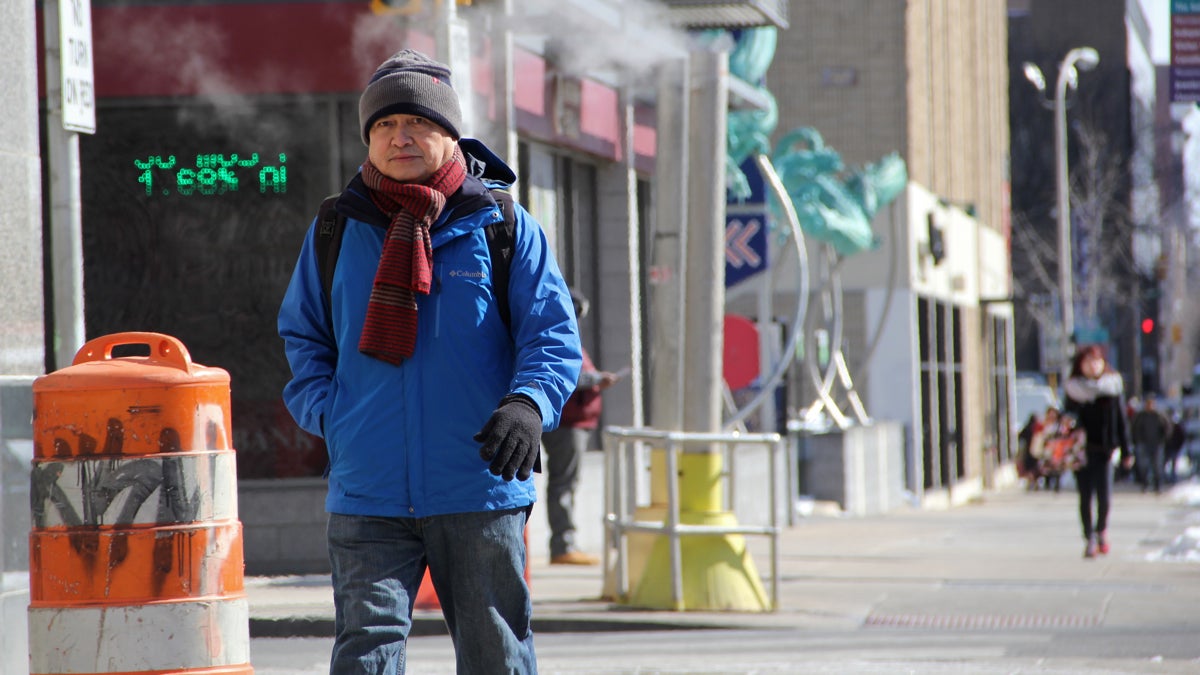Brr … just how cold is it out there?

Bundled up against the extreme cold, a man crosses the street at Eighth and Arch in Philadelphia (Emma Lee/WHYY)
Weather reports this week have been riddled with warnings of just how quickly you can get frostbite as temperatures drop.
According to the National Weather Service windchill chart, for example, if it’s 5 degrees Fahrenheit and winds are blowing at 30 mph, your exposed skin will start to freeze in a short half hour.
This frostbite threshold is a relatively new feature in weather reports.
For decades the National Weather Service has used windchill, a combination of air temperature and wind speeds, to try to capture how cold it actually feels outside.
The earliest windchill index was based on the research of two Antarctic explorers who measured heat loss from water in 1945. Almost ever since, scientists have complained these windchill numbers are deeply flawed, overexaggerating the cold and failing to help people properly plan for time outdoors.
In 2001, amid increasingly public complaints, the National Weather Service finally reworked the windchill formula. At the same time, it introduced a new metric: the frostbite threshold, aimed at being a more useful tool to keep people safe outdoors.
Researchers used mathematical formulas to model how long it’s safe to be outside in different weather conditions before skin starts to freeze. Eventually, those models had to be tested on real live humans.
That meant getting a dozen volunteers into a cold, gusty chamber at the Defence and Civil Institute of Environmental Medicine in Toronto (now Defence Research and Development Canada) to see how their skin withstood the weather conditions.
“(The researchers) had them walk on a treadmill at a fairly low speed, sort of what you would do if you were walking outside, and they varied the air temperature as well as the speed of the wind,” said John Castellani, research physiologist with the US Army Research Institute for Environmental Medicine, an expert on human reaction who was unaffiliated with the 2001 study.
Participants were also spritzed with cold water in the face.
Eventually, their cheek temperatures dropped to 40 degrees.
“It’s certainly an area where you’d have numbness, you wouldn’t have freezing at those temperatures, but from those measurements you can calculate mathematically when they would reach below freezing, if the air and wind speed were even sort of a worse-case scenario,” Castellani said.
These calculations are now incorporated in the National Weather Service frostbite chart, which shows if frostbite will set in after five,10, or 15 minutes with different temperature and wind combinations.
WHYY is your source for fact-based, in-depth journalism and information. As a nonprofit organization, we rely on financial support from readers like you. Please give today.

